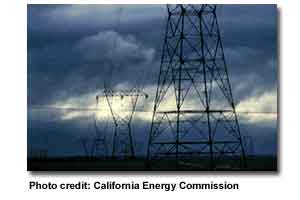|
Duke Energy Progress – Roxboro Steam Electric Plant 
The Roxboro Steam Electric Plant is the largest generating plant on Duke Energy Progress system. The plant has also been ranked in the top ten electric power generating stations in the US during recent years. The plant uses coal mined mostly in West Virginia to fuel the boilers. The coal is brought in by “unit trains” which number 100 cars per trainload. Each car holds 100 tons of coal. The plant will burn anywhere from 150 to 250 cars of coal every day or 15,000 to 25,000 tons. Each ton of coal averages in cost of around $100/ton so the daily fuel bill is in the $1,500,000 to $2,500,000! The coal pile behind the plant is a stockpile which normally can supply the plant for 45-60 days without any deliveries. Coal is crushed and then pulverized into powder about like face powder then mixed with air and blown to the boilers. The igniting fuel then heats the water flowing through tubes to 1005 degrees and 2500 PSI. The steam turns large turbines at 3600 RPM which are coupled to large generators. The power generated by the four generators exceeds 2500 Megawatts. (Roxboro and Person County uses about 100 - 150 megwatts of power) As you can see Roxboro uses very little of the total power generated by the plants. 
The power leaves the station on transmission lines carrying 230,000 or 500,000 volts. These lines are all interconnected with other cities and other power companies to comprise the power “grid”. Connections to Virginia Power, Duke, Danville, South Carolina and many other companies assure adequate power flowing both in and out of the Duke Energy System. Most of the Hyco Lake area power is fed out of a distribution substation North of Roxboro behind the Pizza Hearth Restaurant. This substation has a transmission feed from the Roxboro Steam Plant and Henderson. The distribution line supplying the lake area has some 125 miles of line exposure so if you power goes out, it’s not because the power plant doesn’t have power! The cooling tower for which you see the water vapor rising from are for cooling units 3 & 4. The most notable towers on the west side of the plant are for unit four. These towers operate year round. Unit three towers only operate during the summer months. Units 1 & 2 do not have cooling towers and use the lake cooling effect. Evaporation of the cooling towers can run upwards of 10,000 gallons per minute. Water flowing through the cooling towers can exceed 300,000 gallons per minute. The circulating water that cools the steam being exhausted from the turbines, never comes in contact with the boiler water. The boiler water is a closed system and uses super clean water for making steam. If it were not for this, the steam turbine blades would erode from the particles contained in the steam and expensive replacement would be required. The last stages blades (or buckets) as General Electric calls them, have a diameter of 120” or 10 feet. Imagine ten foot wheels spinning at 3600 RPM and you have an idea of the mammoth size of the steam turbines. The hot water is discharged near the plant on the west side beside the plant back gate access road. This water blends with all three tributaries of Hyco Lake and then travels for the most part towards the dam where it re-enters the plant at a canal near Shore Road. 
You may also hear loud rushing steam sounds from time to time. This happens during start-up and shutdown of individual units. Steam is purged from the lines during startup to eliminate any moisture built up during off line times. This happens a lot of times during the early morning hours when the units are coming on line for the days load. Load varies on the system due mainly due to outside temperatures reducing or increasing demand. If it is real cold or hot and you hear very loud steam blows, the plant most likely has suffered an abnormal or safety system shutdown. This is part of the life of a generating station. The tall chimneys you see are 800 feet tall. These are no longer used since flue gas scrubbers were installed during 2008. The shorter, fatter chimneys that you see water vapor coming out of are now being used and are fiberglass lined. Most of the residue left over from burning coal is recycled. The bottom ash or cinders are sold to make cinder block for homes. The flyash which is the fine powder that is left over after burning, is sold as a cement filler to reduce the amount of cement required to make concrete. You may see large tanker looking trucks entering/leaving the plant which haul these products. Refuse from the scrubbers is used to make drywall board. This plant is located on Shore Road behind the plant and has been in operation since 2011. Any refuse not used in recycling is placed in a landfill on the plant site. The plant has it’s own drinking water system and sewerage system on site. Oil spills within the plant are contained within a oily waste system. Fuel oil is stored on site for use during startup. Hydrogen, chlorine, phosphate, nitrogen, ammonia and other chemicals are used on site for various processes. The plant is operated from two separate control rooms where Operators monitor and control all the processes via elaborate computer systems. Safety is the first job of operating the power plant as there are many dangerous situations that can occur every day. There are no holidays at the Roxboro Electric Generating Plant so when you are riding by on the boat, think about the dedicated men and women working while you enjoy the lake and the air conditioning back at the lake house on July 4th!
|
